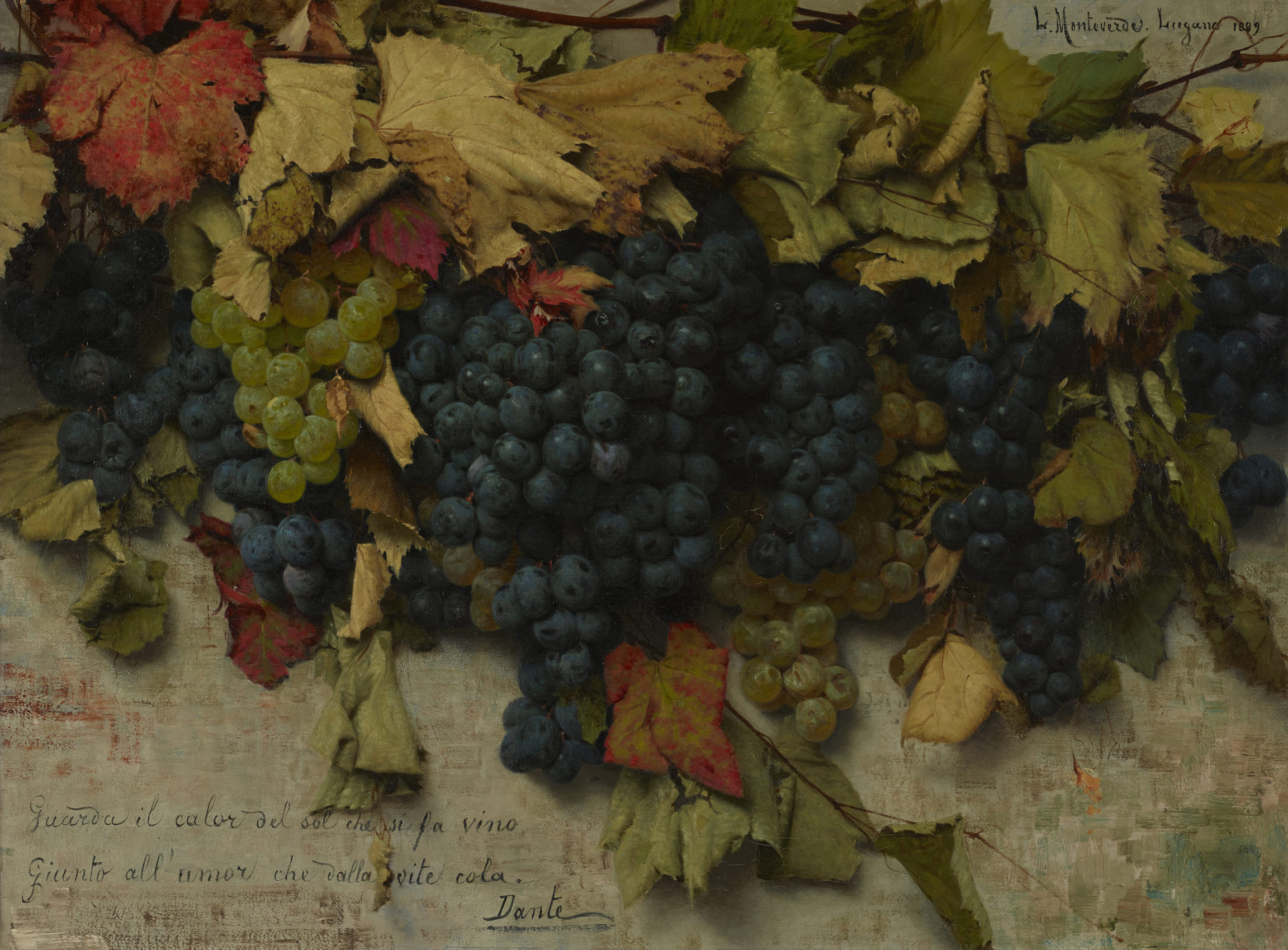Bibliography
Mauro Natale (ed.), Peintures et sculptures italiennes et espagnoles: collections du Musée cantonal des Beaux-Arts de Lausanne, Les Cahiers du Musée des Beaux-Arts de Lausanne n. 7, 1998: n. 58.
Giuseppe Martinola, Luigi Monteverde: 1841-1923, Lugano, Fondazione Ticino Nostro, 1980.




Monteverde’s childhood was divided between Lugano, Buenos Aires, and Montevideo, where his brother, a painter and decorator, taught him his trade. In 1870, Monteverde travelled to Milan and began studying at the history painter Antonio Barzaghi-Cattaneo’s studio and the Brera Academy. He was mostly celebrated for his scenes of rural life and his still lifes.
This painting shows a trellis on a wall, with two lines from Dante’s Divine Comedy quoted in the bottom left hand corner: ‘Consider the warmth of the sun which, combining with the juice that flows from the vine, becomes wine’ (Purgatory XXV, 77-78). By referring to the cornerstone of Italian literature, the artist claims allegiance to Italian culture. The choice of grapes as a subject gestures to the Greek painter Zeuxis, the legendary inventor of trompe-l’oeil painting whose grapes were said to be so realistic they tricked birds into trying to peck at them. Monteverde, seen by his contemporaries as the equal of Zeuxis, was also known as the Raphael of grapes: this work demonstrates his virtuoso talent. By choosing to paint the grapes life-size in landscape format, the ‘wall’ of the canvas merges seamlessly with the painted wall behind, creating a perfect illusion.
The composition, repeated three years later with the same quotation and dimensions, was the first in a series of still lifes with grapes that sought increasingly to heighten the trompe-l’oeil effect by focusing in more tightly on the fruit. The works are almost photographic in ambition, detailing the veins in the leaves, the fleshy texture of the grapes and their various stages of ripeness, from plump and firm to wizened and wrinkled. The paintings also hint at a certain Divisionist influence, particularly in the way the wall seems almost to shimmer in the light.